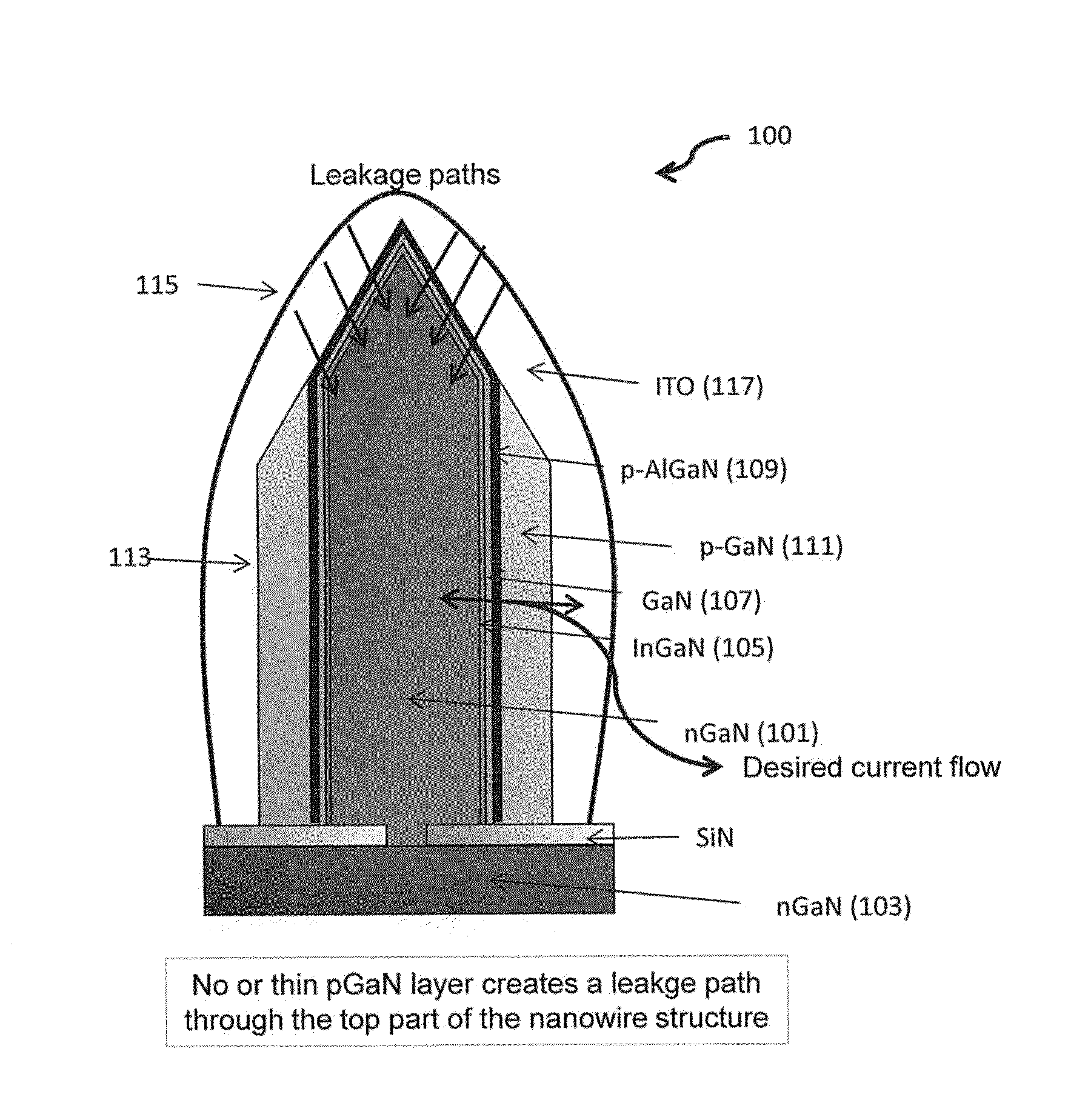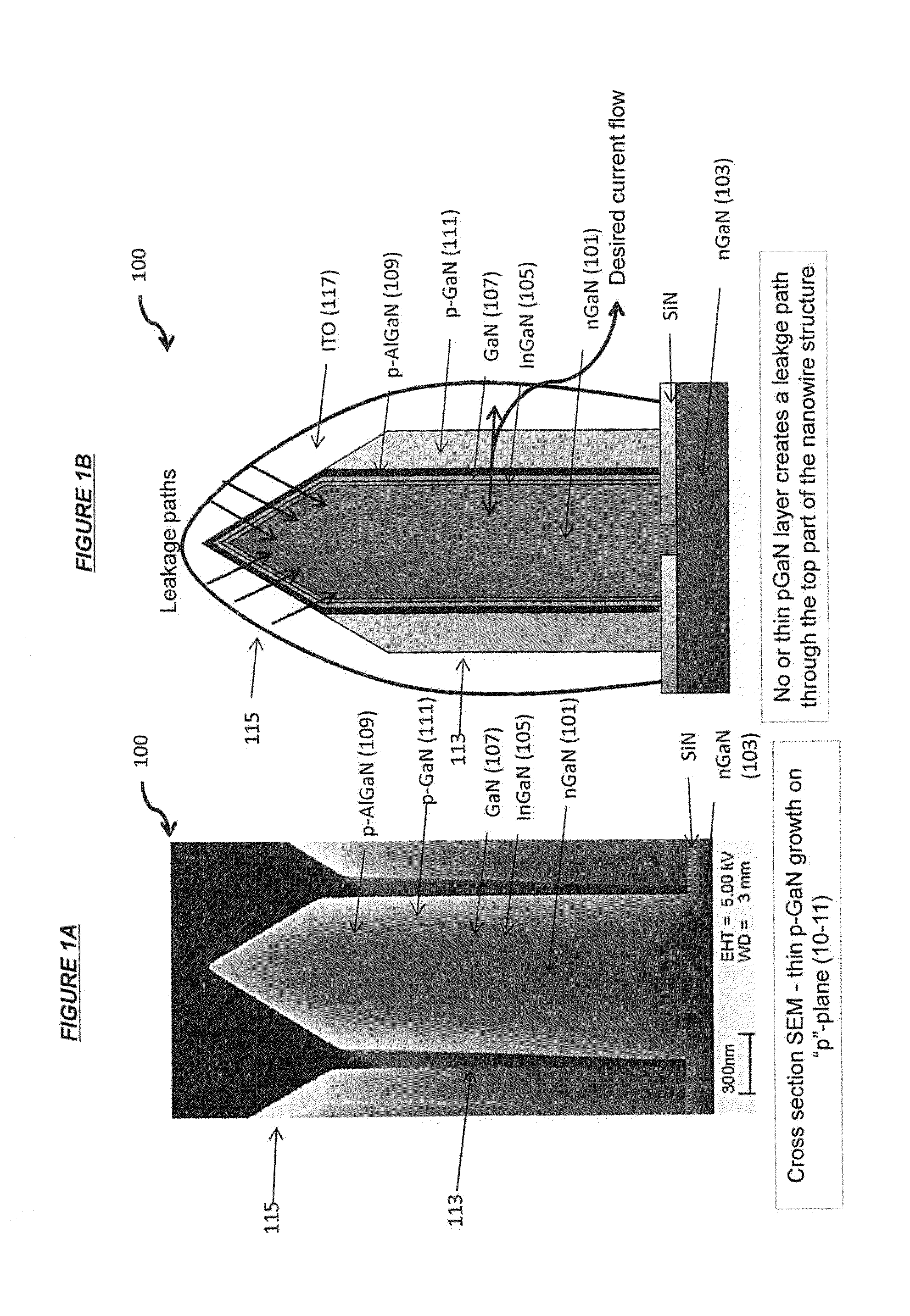Nanowire Sized Opto-Electronic Structure and Method for Modifying Selected Portions of Same
a technology of opto-electronic structure and nanowire, which is applied in the field of nanostructures, can solve the problems that the shape of nanostructures can have challenges in device design, and achieve the effects of high mg/ga, and reducing or eliminating the conductivity of the tips
- Summary
- Abstract
- Description
- Claims
- Application Information
AI Technical Summary
Benefits of technology
Problems solved by technology
Method used
Image
Examples
Embodiment Construction
[0023]The invention provides methods for altering the properties of selected areas of nanowire based structures, in particular opto-electronic structures such as LEDs, for example, nanowire light emitting diodes (LEDs), e.g., altering the properties to decrease conductivity of selected portions of nanowires in a nanowire LED. The invention also provides compositions that can be fabricated, e.g., using the methods of the invention.
[0024]The 3-dimensional nature of LEDs made from nanowires emerging from a planar surface can present challenges in device design. Different crystallographic planes can give different growth rates, material composition, and doping. This can, for example, cause leakage paths and multiple emission wavelengths not desirable for the device. An example is a nanowire LED as illustrated in FIG. 1. In this example, a nanowire LED 100 includes a n-GaN core 101 in electrical contact with an n-GaN buffer layer 103, intermediate layers of InGaN 105, GaN 107, and p-AlGa...
PUM
| Property | Measurement | Unit |
|---|---|---|
| thick | aaaaa | aaaaa |
| thick | aaaaa | aaaaa |
| current leakage | aaaaa | aaaaa |
Abstract
Description
Claims
Application Information
 Login to View More
Login to View More - R&D
- Intellectual Property
- Life Sciences
- Materials
- Tech Scout
- Unparalleled Data Quality
- Higher Quality Content
- 60% Fewer Hallucinations
Browse by: Latest US Patents, China's latest patents, Technical Efficacy Thesaurus, Application Domain, Technology Topic, Popular Technical Reports.
© 2025 PatSnap. All rights reserved.Legal|Privacy policy|Modern Slavery Act Transparency Statement|Sitemap|About US| Contact US: help@patsnap.com



